Vampire Therapist
by Little Bat Games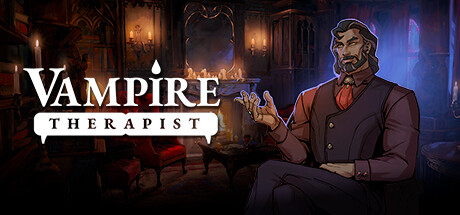
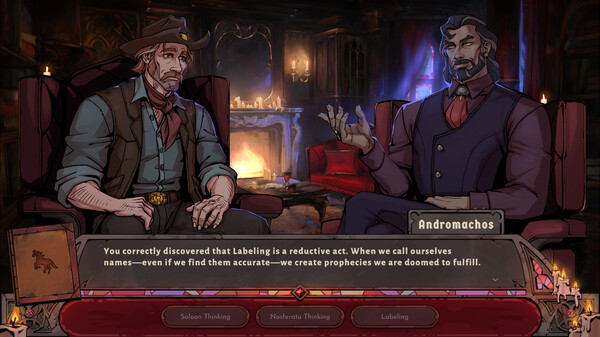
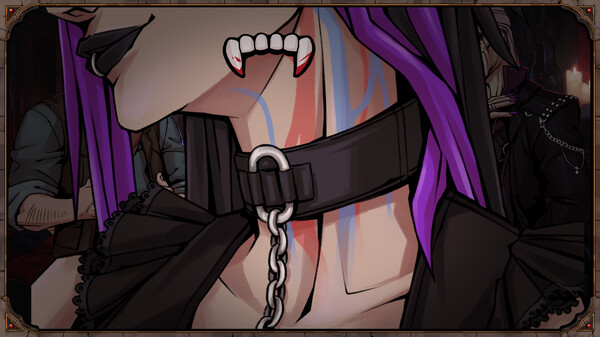
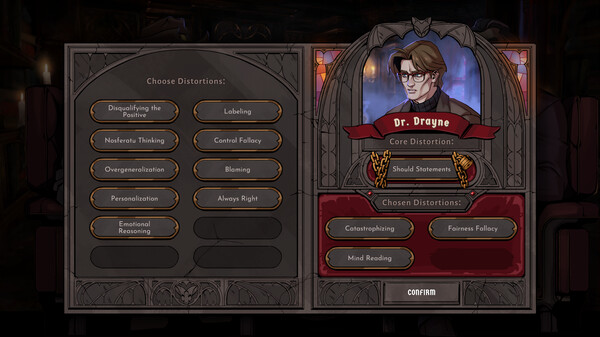
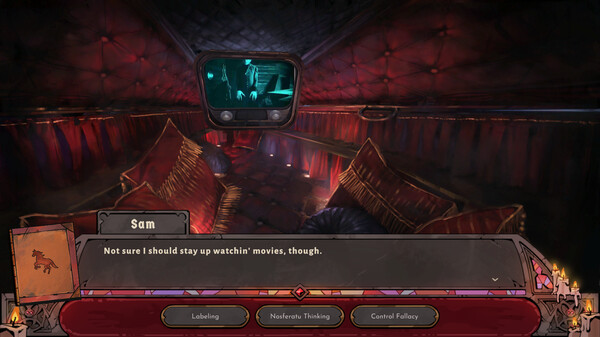
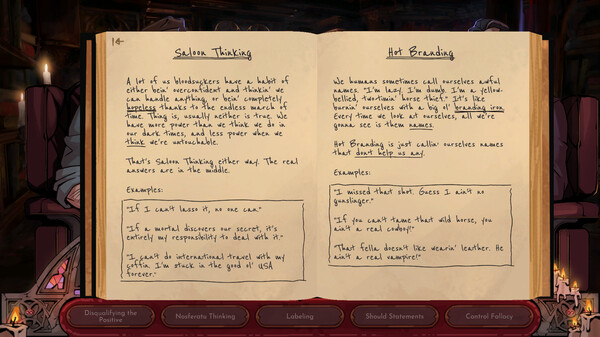
The Developer Says...
Guide vampires through centuries of emotional baggage, decades of delusions and the odd bout of self-loathing with real cognitive behavioral therapy concepts and become a Vampire Therapist! Even vampires need a shoulder to cry on when a neck to bite just won’t do.
Keywords
Players Like...
❤ Gameplay Overview
The game centers players in a narrative adventure where they assume the role of a reformed cowboy vampire who becomes a therapist for other vampires. The core gameplay loop revolves around one-on-one therapy sessions, where players leverage real-world cognitive behavioral therapy (CBT) techniques to identify and challenge the flawed thought patterns of the game's eccentric vampire clientele.
❤ Therapy Sessions
Before each session, players select a set of 5 cognitive distortion terms they can use to confront their client's problems. During the session, players listen as the client describes their issues, then choose the appropriate distortion term to apply. The game provides feedback if the player selects the wrong term, allowing them to try again without penalty. This forgiving structure encourages players to actively engage with the CBT concepts and adapt their approach for each unique client. As the game progresses, players gain access to a wider selection of distortion terms to choose from.
❤ Minigames
Interspersed between the therapy sessions are brief minigame segments. One has players practice mindfulness meditation by following on-screen prompts, while another has them biting into the necks of clients to drink blood. While not essential to the core gameplay, these diversions reinforce the game's vampire theme.
❤ Presentation and Polish
The game features high-quality voice acting that brings the characters to life, complemented by a charming visual style and immersive sound design. Though minor technical issues like dialogue sync problems have been reported, the overall presentation is praised by players as polished and engaging.
❤ Educational Approach
At its core, the experience teaches real-world CBT principles in an entertaining, vampire-themed narrative. By applying these psychology concepts to the game's stories, players learn to identify cognitive distortions in a low-stakes, creative environment. This approach has been widely praised, particularly by those with backgrounds in mental health professions.

